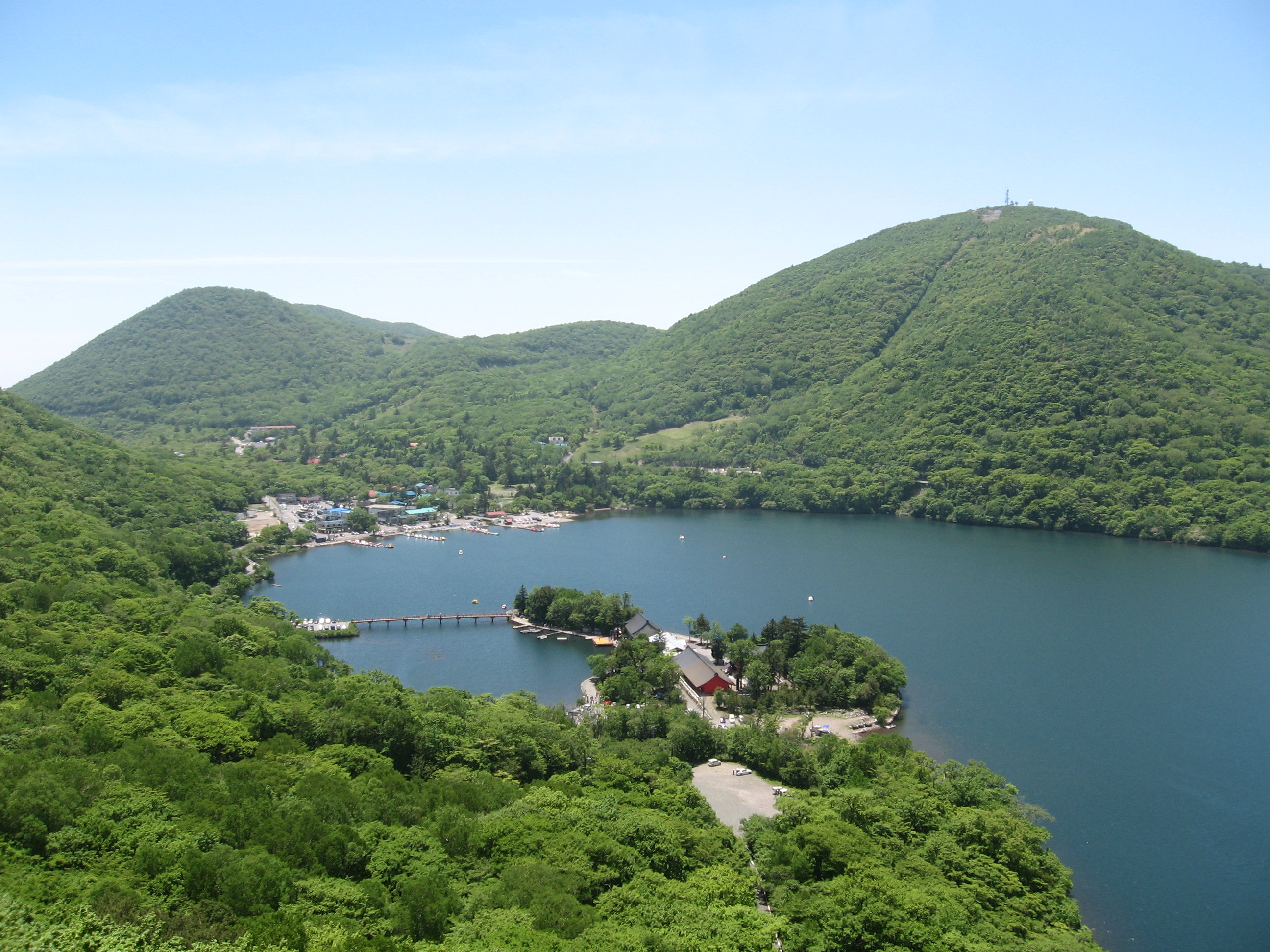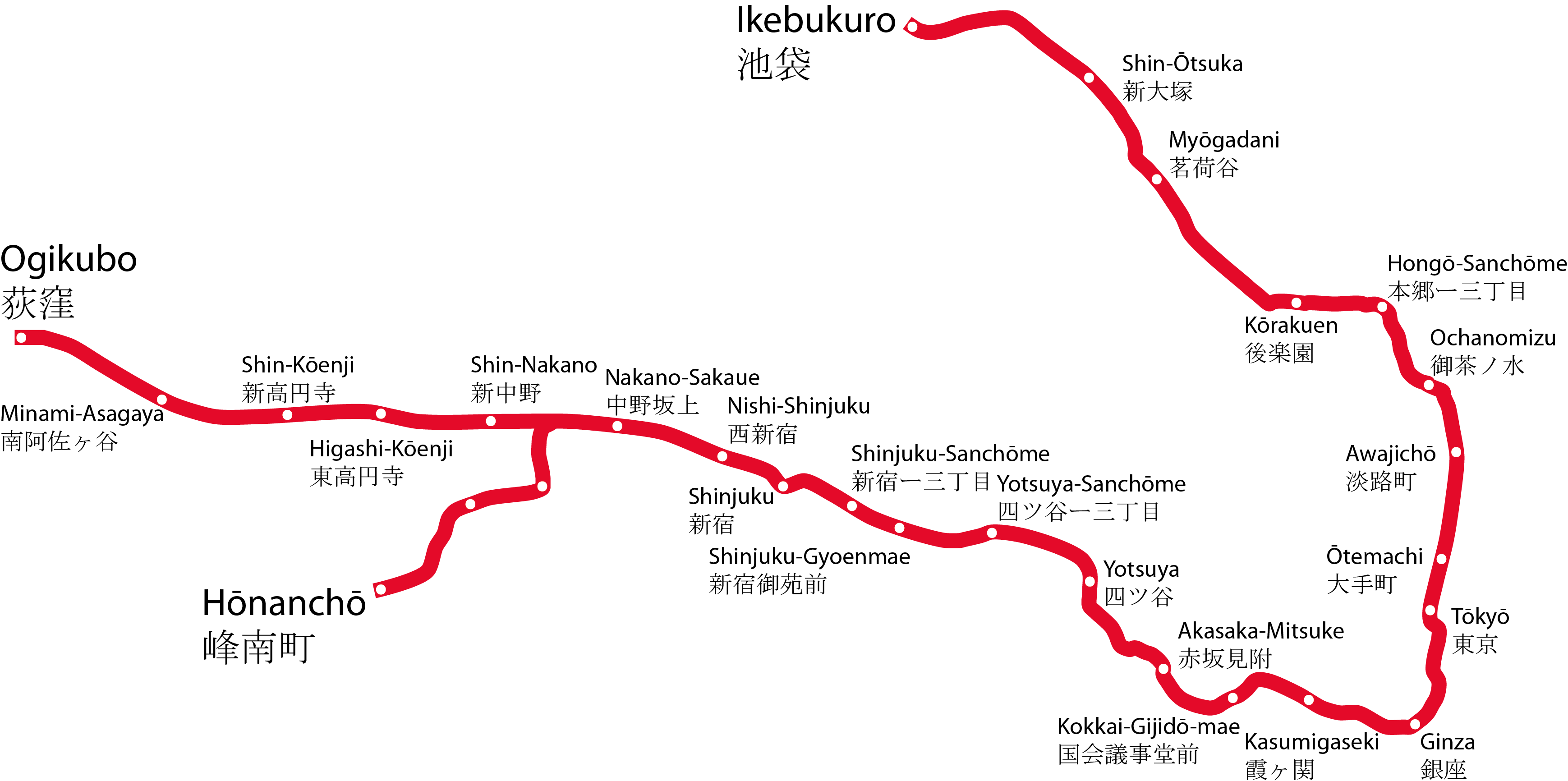|
Tōbu Tōjō Line
The is a suburban railway line in Japan which runs from Ikebukuro Station in Toshima, Tokyo to Yorii Station in Yorii, Saitama, operated by the private railway operator Tobu Railway. Its official name is the , but it is referred to as on Tobu signage and publicity information. The Tojo Line and Tobu Ogose Line branch are isolated from other Tobu lines, such as the Isesaki Line and Nikko Line; some trains can however be transported between the Tojo Line and the rest of the Tobu network via the track connections with the Chichibu Main Line while on the ATS-Chichibu-type. There was a plan to connect between Nishiarai Station, Nishiarai on the Isesaki Line and Kami-Itabashi Station, Kami-Itabashi on the Tojo Line, but this was never built. The name of the line comes from the original plan to construct a line linking with (an Old provinces of Japan, old province now Gunma Prefecture). Stations Abbreviations: * L = (some to/from the Tokyo Metro Fukutoshin Line, Fukutoshi ... [...More Info...] [...Related Items...] OR: [Wikipedia] [Google] [Baidu] |
Tobu 50000 Series
The is a DC electric multiple unit (EMU) commuter train type operated by the private railway operator Tobu Railway in Japan since March 2005, manufactured by Hitachi to its "Hitachi A-train, A-train" concept. The trains represent the first use of aluminium body cars on Tobu commuter trains. They are also the first Tobu trains to feature bilingual (Japanese and English) automated passenger announcements. Variants * 50000 series: 9 x 10-car sets introduced from March 2005 on the Tobu Tojo Line and from September 2020 on the Tobu Skytree Line inter-running services * 50050 series: 18 x 10-car sets introduced from March 2006 on Tobu Skytree Line inter-running services * 50070 series: 7 x 10-car sets introduced from July 2007 on Tobu Tojo Line inter-running services * 50090 series: 6 x 10-car sets with variable seat configurations introduced from June 2008 on Tobu Tojo Line ''TJ Liner'' services 50000 series The first 50000 series set, 51001, was delivered in November 2004 and enter ... [...More Info...] [...Related Items...] OR: [Wikipedia] [Google] [Baidu] |
Gunma Prefecture
is a landlocked Prefectures of Japan, prefecture of Japan located in the Kantō region of Honshu. Gunma Prefecture has a population of 1,937,626 (1 October 2019) and has a geographic area of . Gunma Prefecture borders Niigata Prefecture and Fukushima Prefecture to the north, Nagano Prefecture to the southwest, Saitama Prefecture to the south, and Tochigi Prefecture to the east. Maebashi is the capital and Takasaki is the largest city of Gunma Prefecture, with other major cities including Ōta, Gunma, Ōta, Isesaki, Gunma, Isesaki, and Kiryū, Gunma, Kiryū. Gunma Prefecture is one of only eight landlocked prefectures, located on the northwestern corner of the Kantō Plain with 14% of its total land being designated as List of national parks of Japan, natural parks. History The ancient province of Gunma was a center of horse breeding and trading activities for the newly immigrated continental peoples (or Toraijin). The arrival of horses and the remains of horse tackle coinci ... [...More Info...] [...Related Items...] OR: [Wikipedia] [Google] [Baidu] |
Tokyo Metro Yurakucho Line
Tokyo, officially the Tokyo Metropolis, is the capital and most populous city in Japan. With a population of over 14 million in the city proper in 2023, it is one of the most populous urban areas in the world. The Greater Tokyo Area, which includes Tokyo and parts of six neighboring prefectures, is the most populous metropolitan area in the world, with 41 million residents . Lying at the head of Tokyo Bay, Tokyo is part of the Kantō region, on the central coast of Honshu, Japan's largest island. It is Japan's economic center and the seat of the Japanese government and the Emperor of Japan. The Tokyo Metropolitan Government administers Tokyo's central 23 special wards, which formerly made up Tokyo City; various commuter towns and suburbs in its western area; and two outlying island chains, the Tokyo Islands. Although most of the world recognizes Tokyo as a city, since 1943 its governing structure has been more akin to that of a prefecture, with an accompanying Governor and ... [...More Info...] [...Related Items...] OR: [Wikipedia] [Google] [Baidu] |
Tokyo Metro Marunouchi Line
The is a Rapid transit, subway line in Tokyo, Japan, operated by Tokyo Metro. The line runs in a U-shape between Ogikubo Station in Suginami, Tokyo, Suginami and Ikebukuro Station in Toshima, Tokyo, Toshima, with a branch line between Nakano-Sakaue Station and Hōnanchō Station. The official name is . The line was named after the Marunouchi business district in Chiyoda, Tokyo, under which it passes. On maps, diagrams and signboards, the line is shown using the color red, and its stations are given numbers using the letters "M" for the main line and "Mb" for the branch line. Overview The Marunouchi Line is the second line to be built in the city, and the first one constructed after the Second World War. The route is U-shaped, running from Ogikubo Station in the west of the city via the commercial and administrative district of Shinjuku through to the Marunouchi commercial center around Tokyo Station, before turning back and heading to Ikebukuro. Along with the Tokyo Metro Ginza ... [...More Info...] [...Related Items...] OR: [Wikipedia] [Google] [Baidu] |
Seibu Ikebukuro Line
The is a railway line of the Japanese private railway operator Seibu Railway. It originates at Ikebukuro Station, a large railway junction in north-western Tokyo, extending to northwest suburbs as far as Tokorozawa, Saitama, and nominally terminates at Agano Station. The Seibu Chichibu Line from Agano to Seibu-Chichibu Station is an extension. The operation is largely divided into two sections: from Ikebukuro to Hannō Station and from Hannō to Seibu-Chichibu Station. The section from Hannō to Seibu-Chichibu is single track, but every station except for Higashi-Hanno has passing loops, and trains may pass each other at any stop. There is also a passing loop inside a tunnel where the signal controls bi-directional operation. The rest of all the lines is double track with track gauge. Branch lines The Ikebukuro Line has three branches with through operation, apart from the Seibu Chichibu Line. ;Seibu Toshima Line, Toshima Line : length, with Local trains through from Ikebuku ... [...More Info...] [...Related Items...] OR: [Wikipedia] [Google] [Baidu] |
Saikyo Line
Saikyo may refer to: *Saikyō Line, a Japanese railway line in the Tokyo metropolitan area *''Saikyō Maru ''Saikyō Maru'' (西京丸) was a steamship that was built in 1888 in Scotland for Japanese merchant service. She was requisitioned for service in the First Sino-Japanese War of 1894–95 and the Russo-Japanese War of 1904–05. She was scrappe ...'', a Japanese ship involved in the Battle of the Yalu River (1894) * Western Capital (other) (), several topics People with the surname Saikyo include: * Haruma Saikyo (born 1998), Japanese kickboxer * Yuma Saikyo (born 2000), Japanese kickboxer See also * * {{disambiguation, surname ... [...More Info...] [...Related Items...] OR: [Wikipedia] [Google] [Baidu] |
Yamanote Line
The Yamanote Line () is a railway Circle route, loop service in Tokyo, Japan, operated by the East Japan Railway Company (JR East). It is one of Tokyo's busiest and most important lines, connecting most of Tokyo's major stations and urban centres, including Marunouchi, the Yūrakuchō/Ginza area, Shinagawa, Shibuya, Tokyo, Shibuya, Shinjuku, Ikebukuro, and Ueno, Tokyo, Ueno, with all but two of its 30 stations connecting to other railway or underground (subway) lines. Internally JR East refers to the "Yamanote Line" as the Quadruple-track railway, quadruple-track corridor between Shinagawa and Tabata Station (Tokyo), Tabata via Shinjuku. The corridor consists of a pair of tracks used by Yamanote local trains and another parallel pair of tracks called "the Yamanote Freight Line" used by the Saikyō Line, Saikyō and Shōnan-Shinjuku Line, Shōnan-Shinjuku line trains, some limited express services, and freight trains. In everyday usage, branding on maps and station signage, the "Y ... [...More Info...] [...Related Items...] OR: [Wikipedia] [Google] [Baidu] |
Minatomirai Line
The Minatomirai 21 Line (みなとみらい21線 ''Minato-mirai-21-sen''), commonly known as the Minatomirai Line (みなとみらい線 ''Minatomirai-sen''), is a subway line in Yokohama, Japan that runs from Yokohama Station to Motomachi-Chūkagai Station through the Minatomirai 21 business district. The line opened in 2004 and is operated by the Yokohama Minatomirai Railway Company. Maps and station numbering use navy blue and the route symbol MM to identify the line. The entire line is underground and goes under the Minato Mirai and Kannai districts, as well as numerous islands made of soft reclaimed land and channels, requiring stations to be constructed deep underground. The original above-ground section of the Tōkyū Tōyoko Line between Yokohama and Sakuragichō stations was abandoned and replaced with a new underground connector line to allow through services onto the newly completed Minatomirai Line. Operations All trains run from Yokohama Station to ... [...More Info...] [...Related Items...] OR: [Wikipedia] [Google] [Baidu] |
Tokyu Toyoko Line
The , a contraction of and formerly until 2 September 2019, is a Japanese ''keiretsu'' or conglomerate headquartered in Shibuya, Tokyo. While a multinational corporation, its main operation is , a wholly-owned subsidiary operating railways in the Greater Tokyo Area. History The oldest predecessor of company was the , opened in 1908. The railway's operations were converted into a kabushiki gaisha (company) in 1910. Keita Gotō, now a notable Japanese industrialist, was appointed as the CEO in 1920 and he began a major expansion program. The most important predecessor was first registered on September 2, 1922, as the and is related to the construction of Den-en-chōfu. It was originally founded by the developers of Den-en-chōfu). It was acquired by the Musashi Electric Railway in 1924, shortly before Musashi was renamed into the , also known as the Toyoko, in the same year. After Musashi/Toyoko's acquisition, the Meguro-Kamata Electric Railway initially operated as ... [...More Info...] [...Related Items...] OR: [Wikipedia] [Google] [Baidu] |
F Liner
is the name for the fastest through service train among five railway companies: the Tobu Railway, Seibu Railway, Tokyo Metro, Tokyu Corporation and Yokohama Minatomirai Railway. This name is trademarked by the aforementioned five companies (No. 5885630). Service pattern The name "F Liner" is given to trains under the two route systems explained below. The service type of trains may change once across boundary stations for two different lines. Therefore, systematically, the name "F Liner" will be added before the service type; this means all ''F Liner'' trains are referred to as "F Liner, (Service type on current line)". For instance: Within the Fukutoshin Line → "F Liner, Express", bound for Motomachi-Chūkagai; Within the Toyoko Line → "F Liner, Limited Express", bound for Shinrin-Kōen. # Seibu Line system: Hannō / Kotesashi - Motomachi-Chūkagai #* Seibu Yurakucho Line and Ikebukuro Line: Rapid Express (快速急行) #* Tokyo Metro Fukutoshin Line: Express (� ... [...More Info...] [...Related Items...] OR: [Wikipedia] [Google] [Baidu] |





